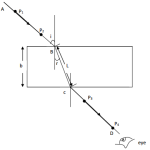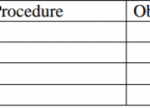KNEC History and Government Paper 1 Question Paper / 2016 KCSE MOKASA Joint Examination
2016 KCSE MOKASA Joint Examination
History and Government Paper 1
SECTION A (25 Marks)
Answer all questions in this section in the answer booklet provided
Give the source of information on history and government which deals with scientific
analysis of man’s material culture.
1 marks
Which was the most common political authority in pre-colonial Kenya?
1 marks
Identify two duties of Orkoiyot among the Nandi during the pre-colonial period
2 marks
What was the main negative effect of plantation agriculture on the people of Kenya
coast.
1 marks
State two terms of Anglo-Germany Treaty of 1890.
2 marks
What was the main importance of the Devonshire white paper of 1923?
1 marks
State two economic benefits of the Kenya Uganda railway during the colonial period.
1 marks
State two immediate events that led the Governor to declare a state of emergency in the
colony in October 1952.
1 marks
Name the first African to be nominated to the legislative Council in Kenya.
1 marks
State two features of political associations that were formed in Kenya between 1920-
1939.
1 marks
Identify two education bodies that appeared among the Agikuyu during the colonial period.
2 marks
Give two objectives of Kenya African Democratic Union (KADU).
2 marks
Name any two women warriors who were involved in the Mau Mau movement.
2 marks
Identify one political challenge faced by Daniel arap Moi as the president of Kenya.
1 marks
Identify the parliamentary symbol of authority.
1 marks
Mention two units that make up the national police units in Kenya.
2 marks
State the main function of the attorney General in Kenya.
1 marks
SECTION B (45 Marks)
Answer any three questions from this section in the answer booklet provided
(a) Give five reasons for the migration of the highland Nilotes into Kenya during the
pre-colonial period. (5 marks)
(b) Describe the social organization of the Borana during the pre-colonial period.
(10 marks)
15 marks
(a) State five characteristics of the early coastal city states. (5 marks)
(b) Explain five effects of missionary activities in Kenya. (10 marks)
15 marks
(a) State five problems faced by the European settlers in Kenya. (5 marks)
(b) Explain five results of the Maasai collaboration with the British. (10 marks)
15 marks
(a) Give five challenges faced by independent churches and schools during the
colonial period. (5 marks)
(b) Describe the role played by Ronald Ngala in the struggle for independence in
Kenya. (10 marks)
15 marks
SECTION C (30 Marks)
Answer any two questions from this section in the answer booklet provided
(a) State three survival rights of a child in Kenya. (3 marks)
(b) Explain six responsibilities of a Kenyan citizen. (12 marks)
15 marks
(a) Give three reasons why elections are important in Kenya. (3 marks)
(b) Describe the law making process in Kenya. (12 marks)
15 marks
(a) Give three factors which may undermine the effectiveness of the traffic police in Kenya. (3 marks)
(b) Explain six functions of the Kenya Defense Forces. (12 marks)
15 marks




